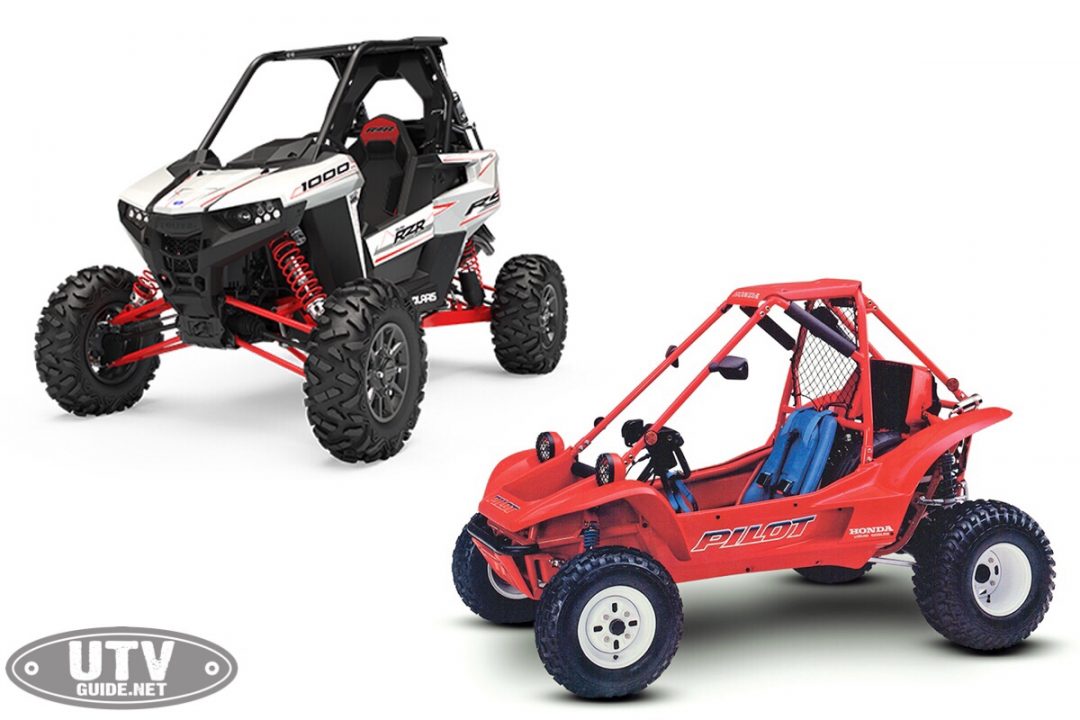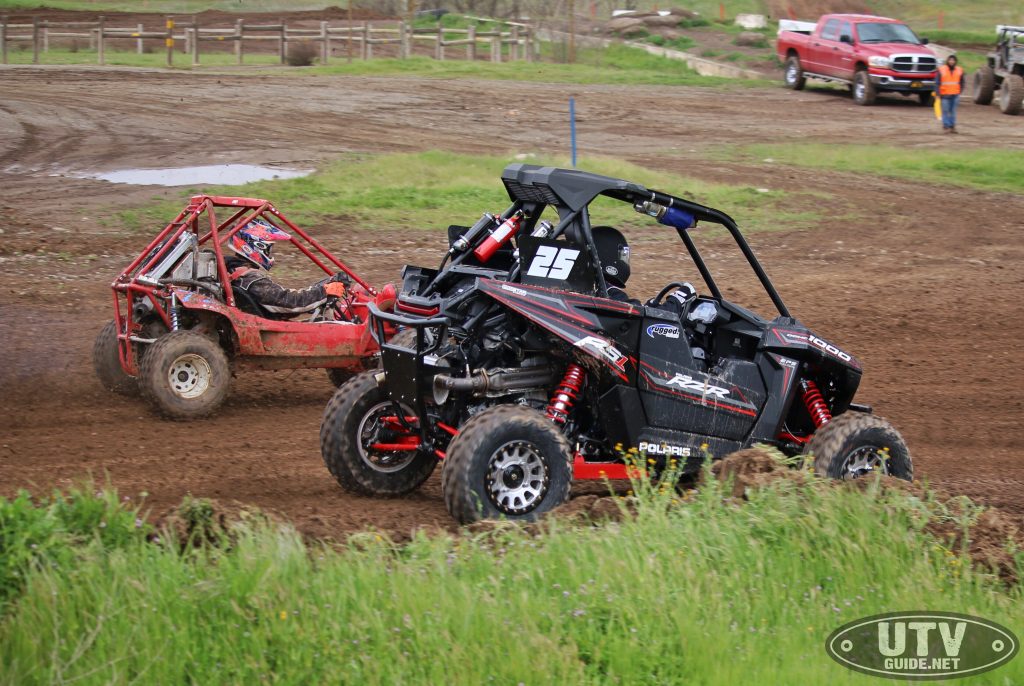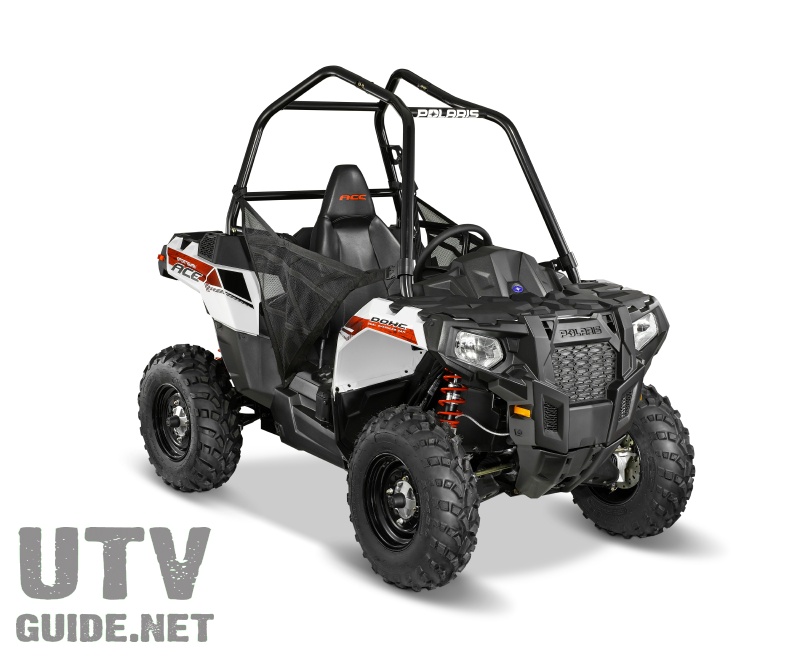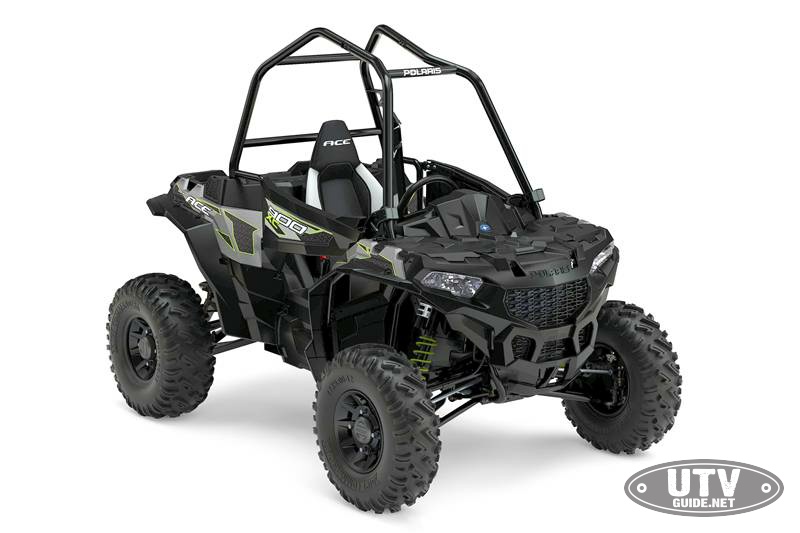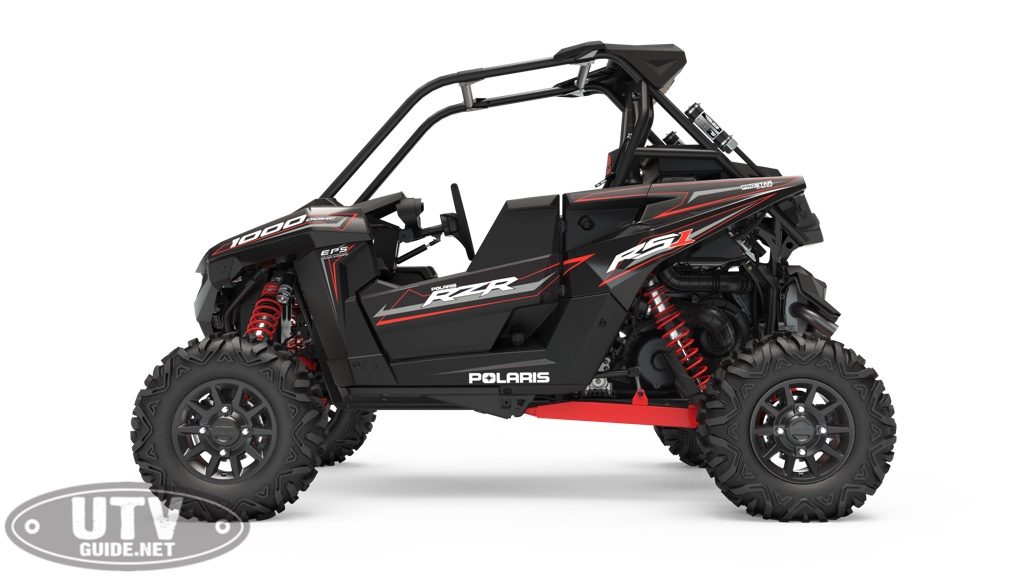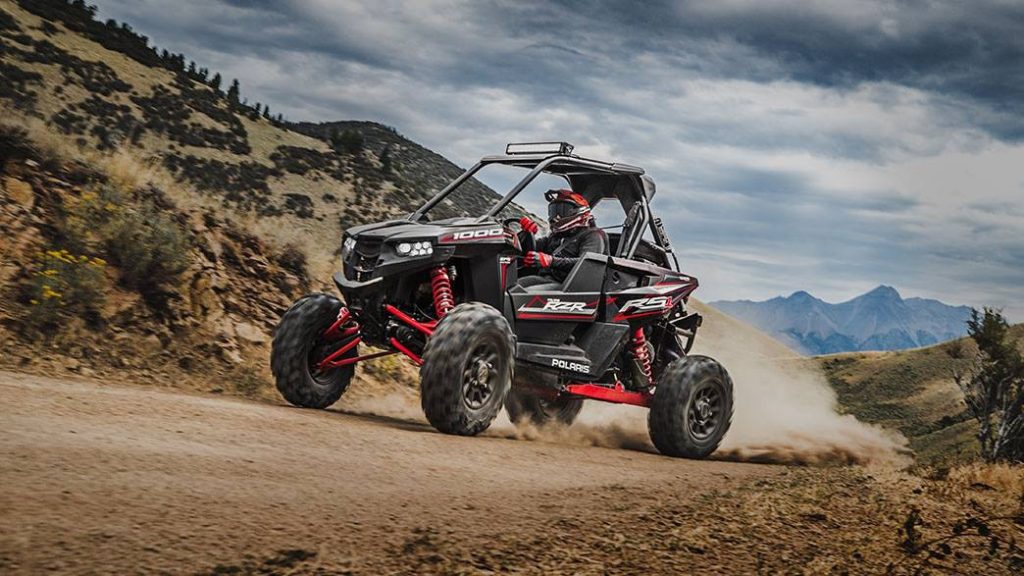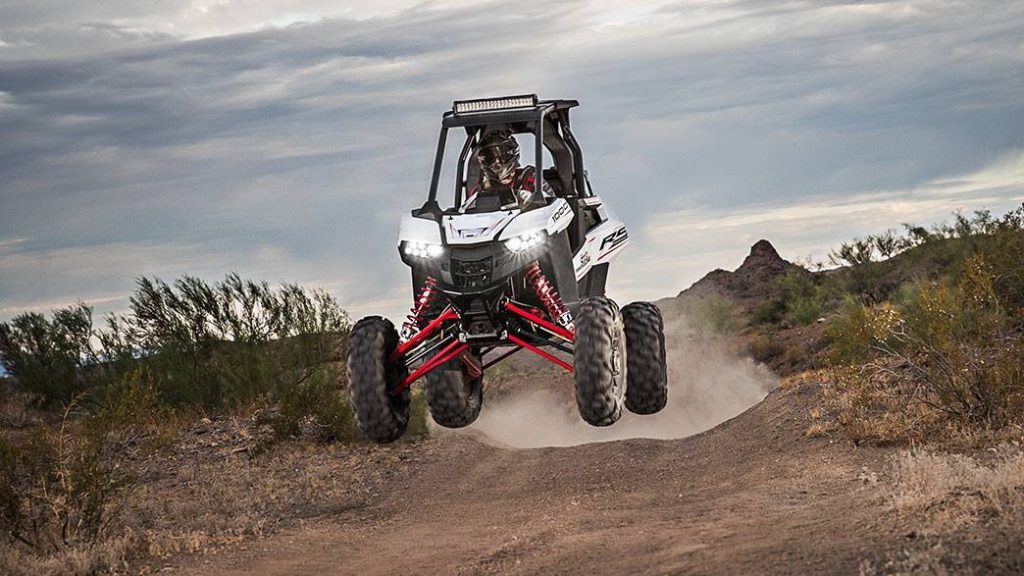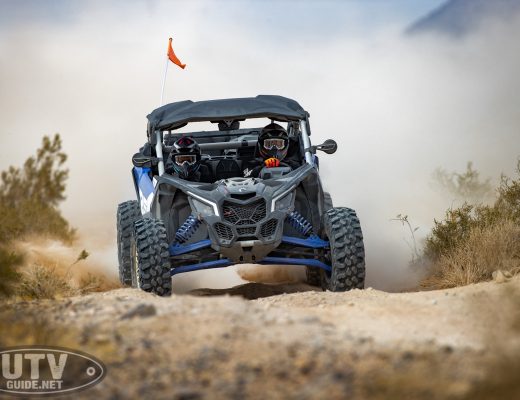To say that we’re in the midst of a single seat revolution might be a bit premature but we can’t deny Polaris has been throwing some serious resources at this niche in recent years and with the release of the new Polaris RZR RS1, it’s safe to say they’re not slowing down. What newcomers to the industry might not realize is that Polaris isn’t the originator of the single seat off-road vehicle. Way back in 1976, Honda released the original Odyssey (not the minivan) complete with a pull start 250cc two stroke engine, a whopping four inches of front suspension travel and no suspension in the rear.
Several years and some major advances in technology yielded the Honda Pilot FL400R; the closest thing to a pure sport single seat UTV ever released until Polaris brought the ACE 900XC to market in 2017. We got to test this machine back in August of 2016 (see ACE 900 XC Review) which was vastly improved over previous ACE models with a more powerful engine and dual a-arm front suspension in lieu of the struts, but even the 900XC doesn’t hold a candle to the RZR RS1 in terms of true pure sport capability.
Call it luck or divine providence but we happened to spot an original Honda Pilot line up against a RZR RS1 at a recent Nor Cal SxS Racing event. Considering there’s a 29 year gap between the two models, it’s no surprise that the RS1 walked all over the Pilot but the fact that the guy actually lined it up against a fleet of modern side by sides is incredibly cool. The two machines were competing in a naturally aspirated class that included Yamaha YXZ 1000R’s, RZR XP 1000’s and a handful of RZR 800’s and 900’s.
Apparently Honda was ahead of its time back in 1988 when it released the Pilot FL400R as it only remained in production for two years. Polaris jumpstarted what is now considered the modern single seat UTV segment in 2014 with the Sportsman ACE with it’s neck jerking 32 horsepower ProStar powerplant. All kidding aside, the original ACE received mixed reviews, not because it failed to deliver, it was simply so unique that it didn’t really fit in a specific box within the industry. It lacked the performance characteristics to get the sport crowd really excited so it sort of just existed as an entry level platform for newcomers who preferred a roll cage and steering wheel to a traditional ATV. Ironically, back in 1988 Honda said of the Pilot, “it doesn’t fit into a class; it creates one.” Hmm…sounds familiar.
It’s clear now, following several iterations of the ACE and a whole lot of improvements, that Polaris has been testing the market to see if it was ready for another pure sport single seat side by side. And that’s exactly what it has delivered with the new RZR RS1.
Where the ACE 900XC was no doubt a sportier version of the ACE 900 and all other previous ACE models, the RZR RS1 is a true pure sport contender and more closely resembles the Xtreme Performance line of RZRs than the lineup of ACE vehicles which makes sense; because it’s a RZR. The suspension is on par with the RZR XP 1000 platform and it shares not only the 110 horsepower ProStar 1000 H.O. (High Output) engine as the RZR XP 1000 but also the upgraded differential that is available in the new RZR XP Turbo S.
It might come as a surprise that the RZR RS1 is only 29 pounds lighter (estimated dry weight) than the base model RZR XP 1000. While that doesn’t give you a significantly improved power to weight ratio, this vehicle is really all about enhanced driver ergonomics. The shorter wheelbase coupled with the center positioned “solo” cockpit provides a vastly improved driver-centric experience.
We recently had the chance to not only see the RS1 in action at Sand Mountain, Nevada, but were also lucky enough to get behind the wheel as well. The RS1 is super fun and can hang with turbos in all but steep dune hill climbs.
We can only assume this level of connectivity with the machine will make it popular in virtually all formats of racing from WORCS to short course, GNCC and even rock racing. The rock bouncer crowd has been building it’s own single seat one-off chassis for a few years and now Polaris has given them one straight from the factory.
The next hurdle is probably more of an issue for promoters than racers but the big question that’s bound to surface, is it fair to race the RS1 against other full size machines or does it need to compete in a class of its own? The GNCC series limits the RS1 to a single seat class but immediately following it’s debut, Ronnie Anderson swept both the SXS Pro and SXS Pro Stock classes at the WORCS racing series (see ALL-NEW POLARIS RZR® RS1 VICTORIOUS IN COMPETITIVE DEBUT). The Red Bull Global Rallycross also sees potential for the new platform as it has made the RZR RS1 the exclusive vehicle used in the series’ new side-by-side class, Polaris GRC (see RED BULL GRC ANNOUNCES DETAILS OF NEW POLARIS GRC CLASS).
While this is certainly a groundbreaking new platform, we find ourselves again asking the question “what’s next?” Maybe a turbo version of the RS1? Honda is rumored to be working on a sport side by side and how cool would it be if the Japanese manufacturer released a new and improved version of the Pilot? Can-Am and Polaris are like brawling teenagers when it comes to one-upping each other in the pure sport category so we can’t imagine that BRP will ignore this niche, but that’s completely speculation.
Time will tell if consumers value the single seat experience enough to justify the cost of buying two machines instead of one UTV capable of carrying a driver and passenger. For comparison’s sake, at $13,999 you could buy two RZR RS1’s for almost the same cost as the new RZR XP TURBO S. Regardless, it’s always fun to see new models enter the marketplace and because the Polaris RZR RS1 is like a highly sophisticated blast from the past, it’s all the more exciting.
Just for kicks since we got to see an original Pilot line up against the new RZR RS1, here are the specs of the two machines side by side.
| Honda Pilot FL400 | Polaris RZR RS1 | |
| Engine |
397cc Single Cylinder 2-stroke |
999cc Twin Cylinder 4-stroke |
| Horsepower |
36 |
110 |
| Transmission |
Automatic CVT with Forward, Neutral and Reverse |
Automatic PVT with Park, Reverse, Neutral, Low and High |
| Dimensions LxWxH |
86.4” x 59.5” x 57.2” |
112” x 64” x 73.75” |
| Wheelbase |
62.2” |
83” |
| Suspension Front |
Dual A-arm 5.9” of travel |
Dual A-arm 16” of travel |
| Suspension Rear |
Dual A-arm 7.1” of travel |
Dual A-arm 18” of travel |
| Weight |
593 lbs |
1340 lbs |
| Ground Clearance |
9.8” |
13” |
| Front Tire Size |
22×7-10 |
29×9-14” Maxxis Bighorn |
| Rear Tire Size |
24×11-10 |
29×11-14” Maxxis Bighorn |
| Front Brakes |
Hydraulic Operated Leading Trailing Shoe |
Hydraulic disc with Dual Bore Calipers |
| Rear Brakes |
Single Disc Brake |
Hydraulic disc with Dual Bore Calipers |
| Fuel Capacity |
4.23 gallons |
9.5 gallons |

